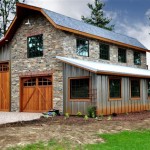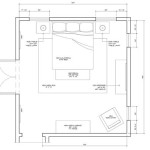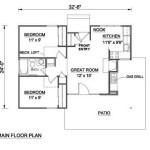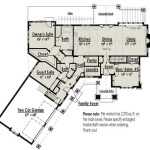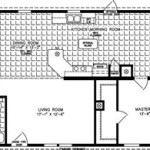Detached In-Law Suite Floor Plans: Considerations and Design Options
The increasing desire for multi-generational living, coupled with the need for flexible housing solutions, has led to a surge in popularity of detached in-law suites, also known as Accessory Dwelling Units (ADUs) or backyard cottages. These independent living spaces offer a balance of privacy and proximity, providing a comfortable environment for aging parents, adult children, or even renters, while maintaining the autonomy of the primary residence. Planning a detached in-law suite involves careful consideration of various factors, including local zoning regulations, budget constraints, desired amenities, and the specific needs of the intended occupants. Perhaps one of the most important of those factors is the floor plan.
Selecting the right floor plan for a detached in-law suite is crucial for maximizing functionality and ensuring a comfortable living experience. Floor plans vary significantly in size, layout, and features, catering to diverse preferences and requirements. A well-designed floor plan should prioritize accessibility, privacy, and independent living capabilities, while also integrating seamlessly with the existing property. This article explores key considerations and design options for detached in-law suite floor plans, providing insights for homeowners embarking on this type of construction project.
Before diving into specific floor plan options, it is important to establish a clear understanding of the fundamental principles that guide their design. The primary goal is to create a space that feels self-sufficient and comfortable for its inhabitants. Therefore, careful thought must be given to the organization of the living areas, the incorporation of necessary amenities, and the attention to details that contribute to a sense of home. This approach will promote harmonious coexistence on the property.
Zoning Regulations and Building Codes
Before initiating the design process, homeowners must familiarize themselves with local zoning regulations and building codes pertaining to ADUs. These regulations vary significantly from one municipality to another and can impact the size, location, and permissible features of the detached in-law suite. Zoning ordinances may dictate minimum and maximum square footage, setback requirements from property lines, parking provisions, and height restrictions. Building codes, on the other hand, address safety standards related to electrical systems, plumbing, structural integrity, and fire resistance. It is highly recommended to consult with the local planning department and building inspector to obtain a comprehensive understanding of the applicable regulations and ensure compliance throughout the design and construction phases. Non-compliance with zoning laws can result in fines, delays, or even the forced removal of the ADU.
Some jurisdictions may have specific requirements regarding accessibility features within ADUs, particularly if they are intended for elderly or disabled occupants. These requirements may include wider doorways and hallways to accommodate wheelchairs, grab bars in bathrooms, and lever-style door handles. Considering these accessibility needs early in the design process can prevent costly retrofits later on. Furthermore, adherence to building codes is essential for ensuring the safety and well-being of the occupants and safeguarding the value of the property. Hiring a qualified architect or contractor with experience in ADU construction is highly advisable to navigate the complexities of local regulations and ensure a successful project.
Beyond zoning and building codes, homeowners need to be aware of any Homeowners Association (HOA) restrictions that may apply to the construction or use of an ADU. HOA covenants may impose additional limitations on the size, design, or occupancy of accessory structures within the community. It is important to review the HOA documents carefully and obtain any necessary approvals before proceeding with the project. Overlooking these regulations can lead to disputes and potential legal action.
Essential Components of a Functional In-Law Suite Floor Plan
A well-designed detached in-law suite floor plan should incorporate several essential components to ensure a comfortable and independent living environment. These components typically include a private entrance, a fully equipped kitchen, a bathroom with appropriate accessibility features, a comfortable living area, and a separate bedroom. The size and layout of each component will depend on the overall square footage of the ADU and the specific needs of the occupants. Additionally, sufficient storage space should be incorporated to accommodate clothing, personal belongings, and household supplies. Consideration should also be given to incorporating laundry facilities, either within the in-law suite itself or in a shared area between the main house and the ADU.
The private entrance is a critical element in maintaining the independence and privacy of the occupants. A separate entrance allows them to come and go without disturbing the residents of the main house. Ideally, the entrance should be located away from the main house's primary access points to further enhance privacy. Additionally, a small porch or patio area near the entrance can provide a welcoming outdoor space for relaxation and socializing. The kitchen should be equipped with essential appliances, such as a refrigerator, stove, oven, microwave, and sink. Counter space and storage cabinets should be sufficient for preparing meals and storing groceries. Consider incorporating universal design principles, such as adjustable-height countertops and pull-out shelves, to make the kitchen more accessible for individuals with mobility limitations.
The bathroom should be designed with accessibility in mind, particularly if the in-law suite is intended for elderly or disabled occupants. Features such as grab bars near the toilet and shower, a walk-in shower with a low threshold, and a comfort-height toilet can significantly improve safety and independence. The living area should provide a comfortable space for relaxing, watching television, and entertaining guests. Natural light and ventilation are important factors to consider when designing the living area. Windows should be strategically placed to maximize sunlight and airflow, creating a bright and airy atmosphere. The bedroom should be designed as a private and restful space for sleeping and relaxing.
Floor Plan Options and Design Considerations
Numerous floor plan options exist for detached in-law suites, ranging from compact studio apartments to larger multi-bedroom units. The optimal floor plan will depend on the available space, the budget, and the specific needs of the occupants. A studio apartment floor plan typically combines the living, sleeping, and kitchen areas into a single open space, with a separate bathroom. This option is ideal for single occupants or couples who are comfortable with close quarters. A one-bedroom floor plan provides a separate bedroom for added privacy, along with a dedicated living area, kitchen, and bathroom. This option is suitable for individuals or couples who desire more space and separation between living and sleeping areas.
For larger families or individuals who require more space, a two-bedroom floor plan may be the best option. This floor plan typically includes two bedrooms, a living area, a kitchen, and a bathroom. Some two-bedroom floor plans may also include a second bathroom or a laundry room. When designing a two-bedroom floor plan, it is important to consider the layout of the bedrooms to ensure adequate privacy for each occupant. Another design consideration is the orientation of the ADU on the property. The orientation should be optimized to maximize sunlight exposure and minimize noise from the main house or surrounding streets. Consider the prevailing wind direction when positioning windows and doors to promote natural ventilation.
Furthermore, the exterior design of the in-law suite should complement the architectural style of the main house. Using similar materials and design elements can create a cohesive and visually appealing aesthetic. Landscaping can also play a significant role in integrating the ADU into the overall property design. Planting trees and shrubs can provide privacy, create a sense of enclosure, and enhance the curb appeal of the property. Finally, consider future-proofing the design. While the immediate needs of the initial occupants are paramount, designing the in-law suite with flexibility in mind allows for potential future adaptations to accommodate changing needs or family dynamics. This could involve incorporating flexible spaces that can be easily reconfigured or choosing finishes and fixtures that appeal to a wide range of tastes.

Homes With Mother In Law Suites

Detached Mother In Law Suite Floor Plans Google Search Garage Cottage Style House

Small Mother In Law Suite Floor Plans Home Design Apartment Cottage

Exclusive 4 Bed House Plan With Detached In Law Suite 93109el Architectural Designs Plans

Find The Perfect In Law Suite Our Best House Plans Dfd Blog

Exclusive 4 Bed House Plan With Detached In Law Suite 93109el Architectural Designs Plans

Image Result For Detached Mother In Law Suite House Plans Multigenerational One Story Family

House Plans With In Law Suites Houseplans Blog Com

In Law Suite House Floor Plans Mother Apartment

In Law Suites Accessory Dwelling Units Northern Virginia


